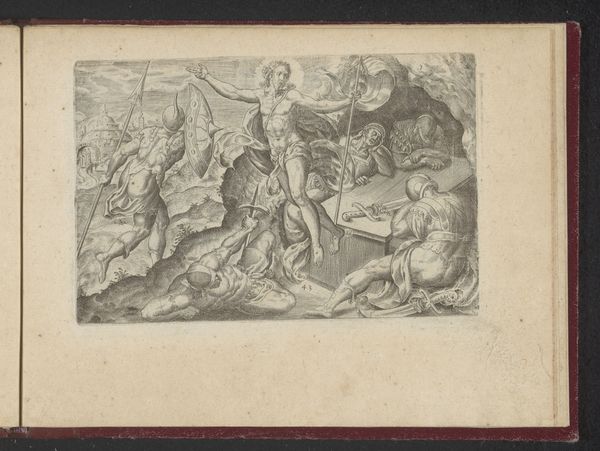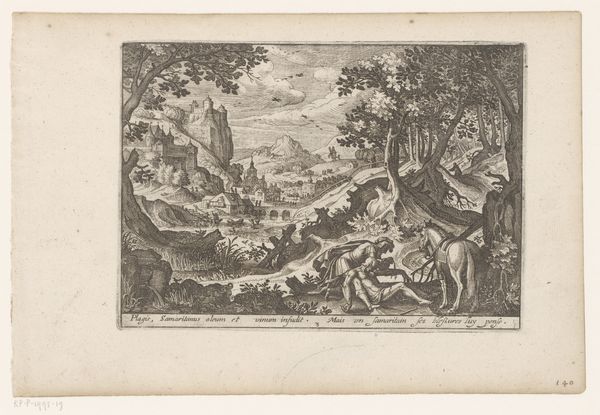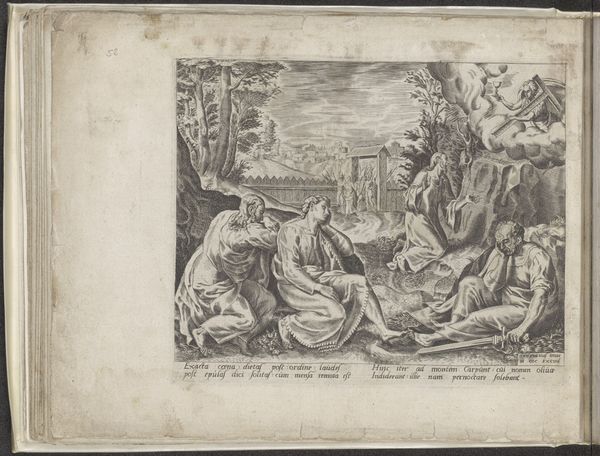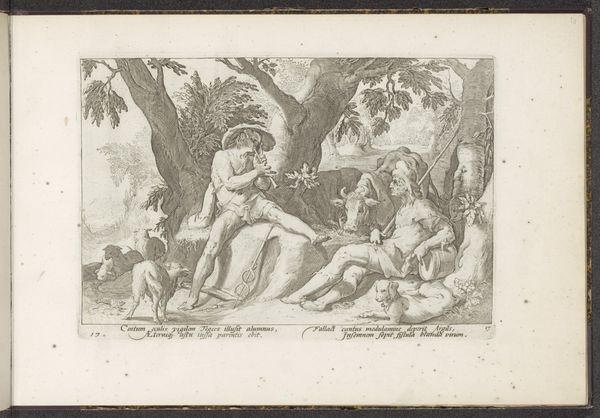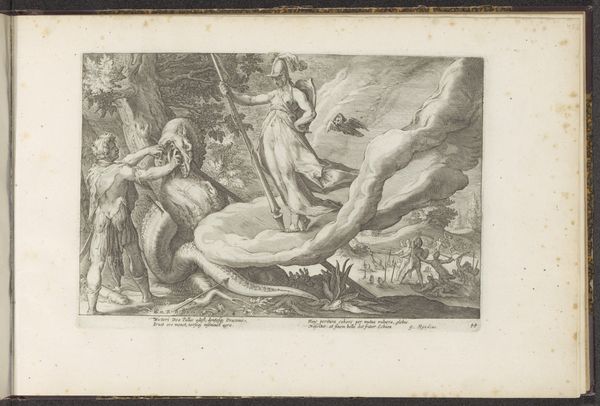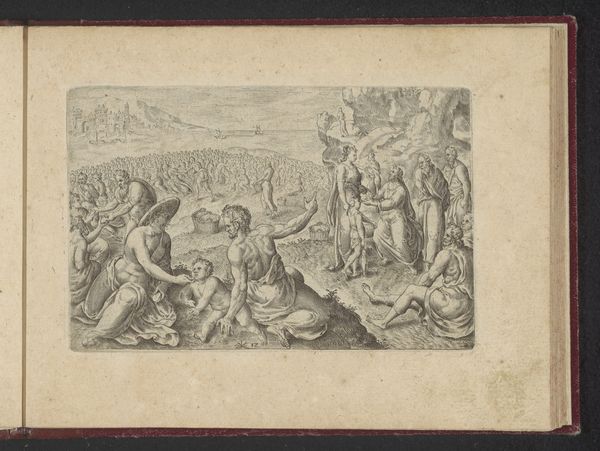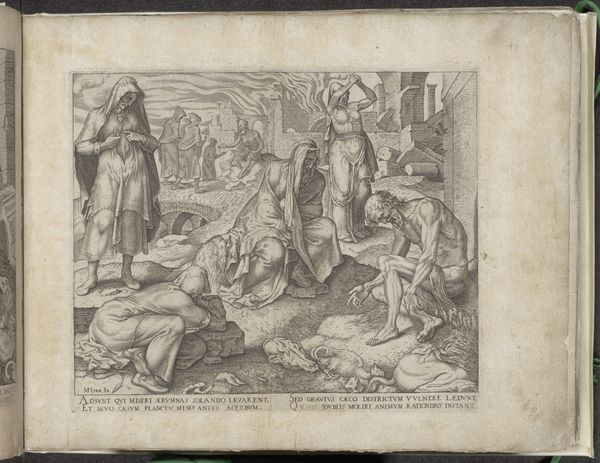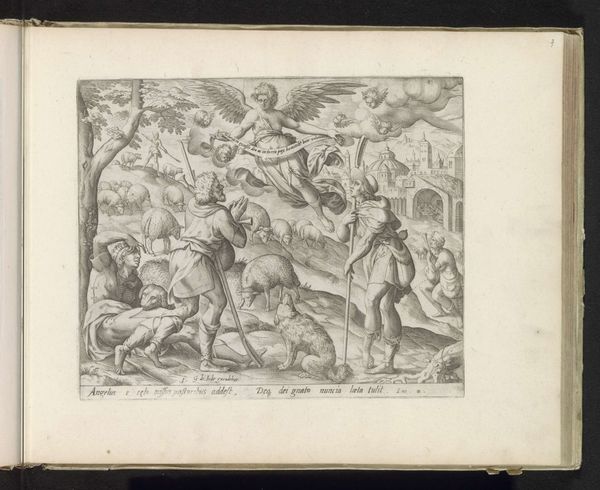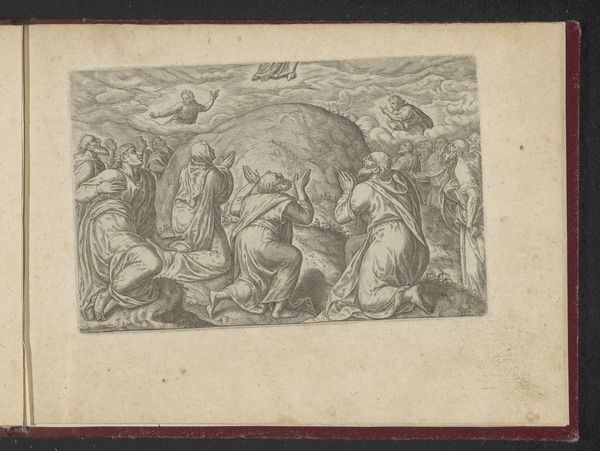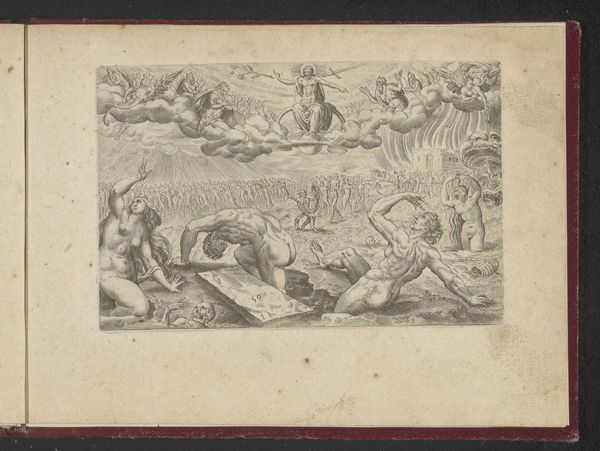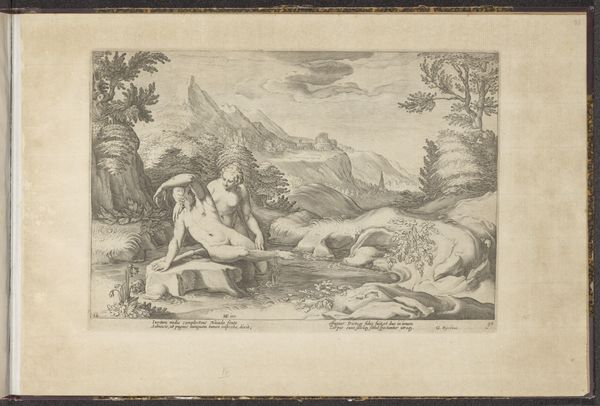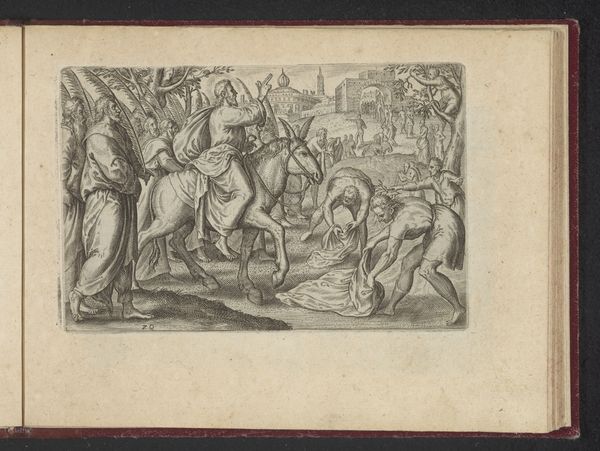
print, engraving
#
aged paper
#
toned paper
# print
#
pen sketch
#
sketch book
#
landscape
#
mannerism
#
figuration
#
personal sketchbook
#
pen-ink sketch
#
pen and pencil
#
pen work
#
sketchbook drawing
#
history-painting
#
sketchbook art
#
engraving
Dimensions: height 92 mm, width 139 mm, height 137 mm, width 183 mm
Copyright: Rijks Museum: Open Domain
Curator: Here we have Philips Galle’s "Christus in de hof van Gethsemane," created around 1573. It’s currently held in the Rijksmuseum. Editor: It's so evocative, capturing such a somber scene. The figures, though small, carry significant emotional weight. The etching is very expressive. Curator: As an engraving, the piece speaks to the highly developed printmaking industry of the late 16th century, a period in which the Netherlands dominated production and distribution. Galle, as both designer and printmaker, controlled the image’s narrative and its circulation, reflecting the commercial aspects inherent in disseminating religious imagery. Editor: I find Galle's use of line incredibly compelling. Notice how the density and direction create such dramatic contrast and mood. The positioning of the figures, the slumbering disciples in the foreground, Christ's isolation in prayer... the formal choices underline the story. Curator: And it's precisely in this intersection of commerce and piety that the engraving operates. It served as a visual aid for personal devotion and, as part of a larger print series, reflects how religion and capitalism were intrinsically connected. The scale allows us to contemplate a deeply personal spiritual encounter but made accessible to a broad market. Editor: You can also observe elements typical of Mannerism, with elongated figures and theatrical compositions. These aesthetic elements enhance the emotionality of the scene. Note, too, the angel bringing divine comfort, meticulously rendered, almost floating. Curator: The paper itself is also quite interesting; notice the aging and the tone, both byproducts of time and preservation methods of paper from the period, and of course these condition considerations play into our current understanding. Editor: For me, the beauty resides in the detail and precision and what that brings to the viewing experience and spiritual understanding of that moment. Curator: Indeed, and reflecting on Galle’s practice provides another perspective to examine the circulation of images and their role within society at that time. Editor: An analysis reveals not only the narrative but its formal construction and impact of a master printmaker and storyteller.
Comments
No comments
Be the first to comment and join the conversation on the ultimate creative platform.
